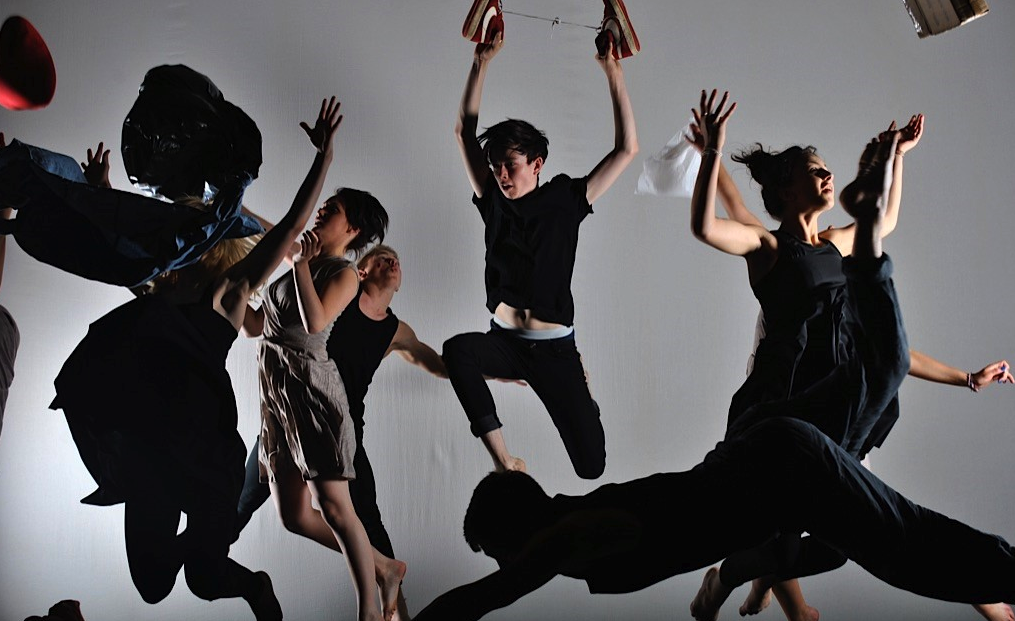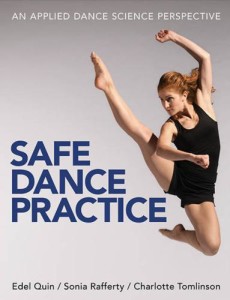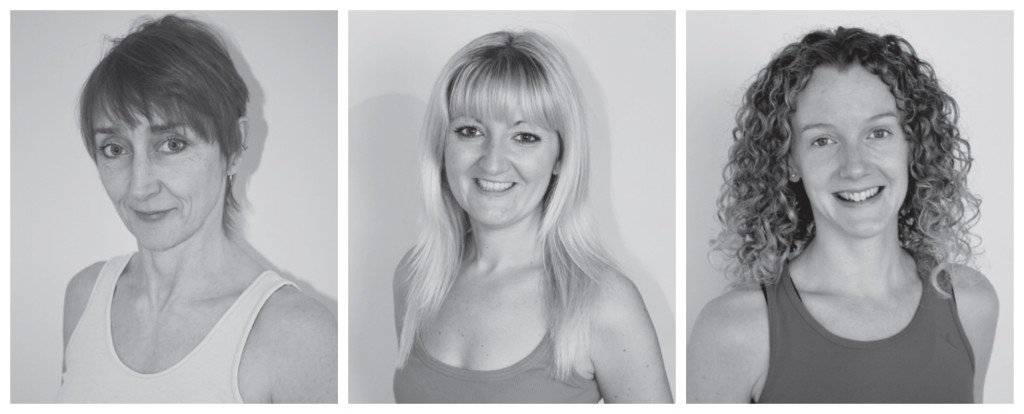
Aloha All 🙂
New dance medicine book to share! “Safe Dance Practice” is written by three British colleagues of mine in the dance medicine world, Edel Quin / Sonia Rafferty / Charlotte Tomlinson. All three are involved with IADMS (International Association for Dance Medicine and Science), Safe in Dance International (SIDI), and are all MSc graduates of the Dance Science program at Trinity Laban Conservatoire of Music and Dance (London UK). They have been long-involved in dance medicine and science, aka Dance Wellness, aka Safe Dance Practice (a British term), and have put together their invaluable knowledge and experience in writing this book – giving teachers and dancers a solid grounding for training healthy dancers who will be better equipped to dance many long years, in the best possible condition. The book is a great addition to your dance medicine and science library – Please pass it on!
Aloha
Jan
by Sonia Rafferty, Charlotte Tomlinson and Edel Quin
What It Isn’t!
The term “safe dance practice” often conjures up the vision of a checklist of boring, restrictive, and often unnecessary health and safety regulations. As dancers, choreographers, and teachers, we certainly don’t want to be held back in our artistic endeavours by recommendations that we think will limit our creative risk-taking capacity.
Fortunately, the upsurge of interest and increasing knowledge in safe dance practice will help us to do exactly the opposite. We can support artistic challenge by helping dancers to train and work at their best, but also heed the potential reasons for the high injury rate that has been observed in a wide variety of different dance styles.
Who Is It For?
Safe dance practice is important for dancers of any age and any ability. It is not simply for the elite “racehorse” of a dancer, at risk because of high-level demands, or the dancer who perhaps could be seen to be more prone to injury because of lack of technicality or physical ability.
Knowing how to work safely and effectively is relevant for everyone – for dancers themselves who can take responsibility for protecting and maintaining their readiness to dance, and for teachers who are trusted with instructing the dancing bodies. Add to that list the choreographers who use the expertise and abilities of dancers to create innovative and challenging works, and the artistic directors and managers who rehearse those dancers and organise their schedules.
What Is Involved?
Is it simply making sure that we have a safe, warm space to work in with a good, supportive floor and knowing where the first aid kit and the fire exits can be found? No, not at all. Of course, these are some of the fundamentals of safety, but safe dance practice is so much more than this – there are several different aspects to consider.
 The Principles of Safe Dance Practice
The Principles of Safe Dance Practice
The key elements have emerged from the burgeoning dance science research that is helping dance as an art form move forward. The principles of safe practice deal with the interplay of environmental, physical, and psychological factors that can have an impact on how effective our dancing can be. These can be applied to any dance style, any level of ability or participation, and any age group.
Environmental Principles
The setting in which we practice would ideally have a sprung floor with a good surface that isn’t too slippery or sticky for either shoes or bare feet. An appropriate temperature would ensure that dancers didn’t get too hot (so as to sweat excessively, possibly leading to dehydration) or too cool (cold bodies become injured more easily). The space would be an adequate size for the number of dancers so that they could move without restriction or fear of collisions, and free of obstacles that might be a hazard.
This is an ideal situation – often we don’t have a choice about the space in which we work. However, we can deal with this by making informed decisions about how to minimize any potential risks. For example, we could reduce or eliminate jumps on a hard floor, ensure dancers wear layers of clothing that they can adjust according to their body temperature, and remove any extraneous objects from the dance space before we start work. We can also mediate potentially negative consequences with some forward thinking and planning, such as considering risk assessment, injury reporting and documentation, and insurance.
Physical Principles
The more we know about how the body works when dancing, the more we can understand how much to push it, be aware of why and how it needs to recover and ultimately keep dancing for longer. Knowledge about how to….
• warm-up and cool down effectively
• recognize good functional alignment appropriate to our specific dance style and be able to strive towards it without pushing beyond individual capacity
• understand when and why the different types of stretching can be used productively
• balance workload and rest
• encourage fit, well-nourished and healthy bodies that are ready to dance
….. helps to limit injury and make dancing more enjoyable, technically sound and sustainable in the long term.
Psychological Principles
Often forgotten is the psychological component of safe practice, even though we know that physical and mental states of health are inter-dependent on one another. A positive learning and training environment supports dancers’ self-confidence, avoids stress and anxiety and promotes emotional wellbeing, and helps dancers of all ages and abilities to get the most out of their dancing.
Psychological or behavioural factors that play a part include:
• fostering mutually respectful relationships between dancers and dance leaders
• using clear communication to ensure instruction and feedback is framed positively and appropriately
• emphasizing effort and progress over ability and talent, accepting the value of learning from mistakes and avoiding comparison with others
• promoting positive attitudes towards oneself and other dancers
There’s More….
One of the inherent aims of safe practice is to reduce the risk of injury, but dance is a physical activity so it is impossible to prevent it ever happening. Therefore it’s important to know how to cope should an incident occur while dancing. Understanding simple recommendations such as PRICED – the procedure to follow immediately following an injury (Prevent/Protect: Rest: Ice: Compression: Elevation: Diagnosis) – allows a responsible and swift response before the dancer is able to seek professional treatment.
The most crucial aspect of safe practice, though, is its real-life application. We need to remember that when leading (teaching or rehearsing) dancers, the important thing is to respond to the actual people dancing, gauging both individual needs and those of each specific group, adapting expectations and adjusting demands reactively.
Dance sessions need to be tailored to age (in relation to how the body changes from childhood through to adulthood and into older age) and ability (the recreational, vocational or professional context). Training principles can be manipulated to encourage and challenge technical development in any setting, taking care to progress at a suitable pace and work at an appropriate intensity. Approaching dancing this way can minimise the risk of injury that arises from things like overwork and fatigue (physical and mental tiredness – one of the biggest causes of injury for dancers), excessive repetition, unrealistic aims and imbalanced schedules.
Incorporating Safe Practice
We need to take care of our dancing selves, whether we simply want to dance recreationally for fun, enjoyment and social connection, or whether we want to be instruments in the exciting developments that are setting new levels of athleticism and technical virtuosity. With the best will in the world, every dancer, teacher or choreographer may not be able to uphold every principle of safe dance practice all of the time, but knowledge and understanding of what is involved will certainly help.
So, the take-home message is that safe practice is not a “spoilsport” set of rules that will threaten artistic and creative possibilities, but a truly effective way to minimize injury risk, optimize potential and prolong participation. As dance artists, by educating ourselves and embracing these dance science-informed principles, we can keep breaking new boundaries!
Sonia, Charlotte and Edel are co-authors of Safe dance practice: An applied dance science perspective (2015) available at http://www.humankinetics.com/products/all-products/safe-dance-practice.
They are also members of the team at Safe In Dance International (SiDI), endorsing and promoting safe dance practice education and development worldwide. See http://www.safeindance.com/ for more information.
All MSc Dance Science graduates from Trinity Laban Conservatoire of Music and Dance (London UK), they continue to integrate their knowledge and appreciation of safe practice into their own work as freelance dance artists, researchers, educators and consultants.





